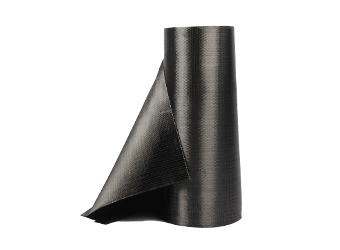Solutions
Horse Construction offers full range of structural strengthening materials with technical supports, documentation supports, products supports, project supports.
Detailed Overview: Carbon Fibre Strengthening

Carbon fiber strengthening is a structural retrofitting technique that involves the use of carbon fiber reinforced polymer (CFRP) to enhance the strength and stiffness of existing structures. Carbon fiber strengthening is increasingly used in construction and engineering applications, particularly for retrofitting existing buildings and infrastructure.
The carbon fiber strengthening process typically involves the following steps:
Assessment and design: The existing structure is assessed to identify the areas that require strengthening. A design is then developed for the carbon fiber reinforcement system, taking into account the size, shape, and condition of the structure, as well as the expected loads and stresses.
Surface preparation: The surface of the structure is cleaned and prepared to ensure a strong bond between the carbon fiber and the existing surface. This may involve sandblasting, grinding, or other surface preparation techniques.
Application of epoxy resin: An epoxy resin is applied to the surface of the structure, which serves as a bonding agent for the carbon fiber. The resin is typically applied in several layers, allowing time for each layer to cure before the next layer is applied.
Application of carbon fiber fabric: Once the epoxy resin is applied, carbon fiber fabric is placed over the surface of the structure. The fabric is typically pre-impregnated with resin to ensure a strong bond with the underlying surface.
Curing and finishing: Once the carbon fiber fabric is in place, it is allowed to cure and harden. Once cured, the surface is typically sanded and finished to create a smooth and uniform surface.

The cost-effectiveness of using carbon fiber for structural strengthening depends on several factors, such as the size and complexity of the structure, the extent of the strengthening required, the cost of the materials and labor involved, and the expected lifespan and performance of the strengthening solution.
In general, carbon fiber strengthening can be a cost-effective solution for structural strengthening, particularly for structures that are difficult or expensive to replace or that require significant strengthening. Carbon fiber is lightweight and easy to install, which can reduce labor and transportation costs. Additionally, carbon fiber has a high strength-to-weight ratio, which means that it can provide significant strengthening benefits with a relatively small amount of material.
However, the cost of carbon fiber materials can be higher than other traditional strengthening materials, such as steel or concrete. Additionally, the preparation and installation of carbon fiber strengthening require specialized knowledge and equipment, which can increase labor costs. Finally, the cost-effectiveness of carbon fiber strengthening depends on the expected lifespan and performance of the strengthening solution. If the expected lifespan and performance are low, carbon fiber strengthening may not be a cost-effective solution.
In summary, the cost-effectiveness of using carbon fiber for structural strengthening depends on several factors, and a detailed cost-benefit analysis is required to determine the most appropriate solution for each specific case. Carbon fiber can be a cost-effective solution for structural strengthening, particularly for structures that require significant strengthening and that are difficult or expensive to replace.
You can find anything here you are in need of, have a trust trying on these products, you will find the big difference after that.

High strength, unidirectional carbon fiber wrap pre-saturated to form a carbon fiber reinforced polymer (CFRP) wrap used to strengthen structural concrete elements.

High strength, unidirectional carbon fiber fabric pre-saturated to form a carbon fiber reinforced polymer (CFRP) fabric used to strengthen structural concrete elements.

High strength, unidirectional carbon fiber sheet pre-saturated to form a carbon fiber reinforced polymer (CFRP) sheet used to strengthen structural concrete elements.